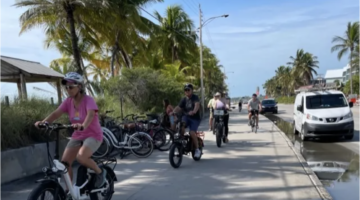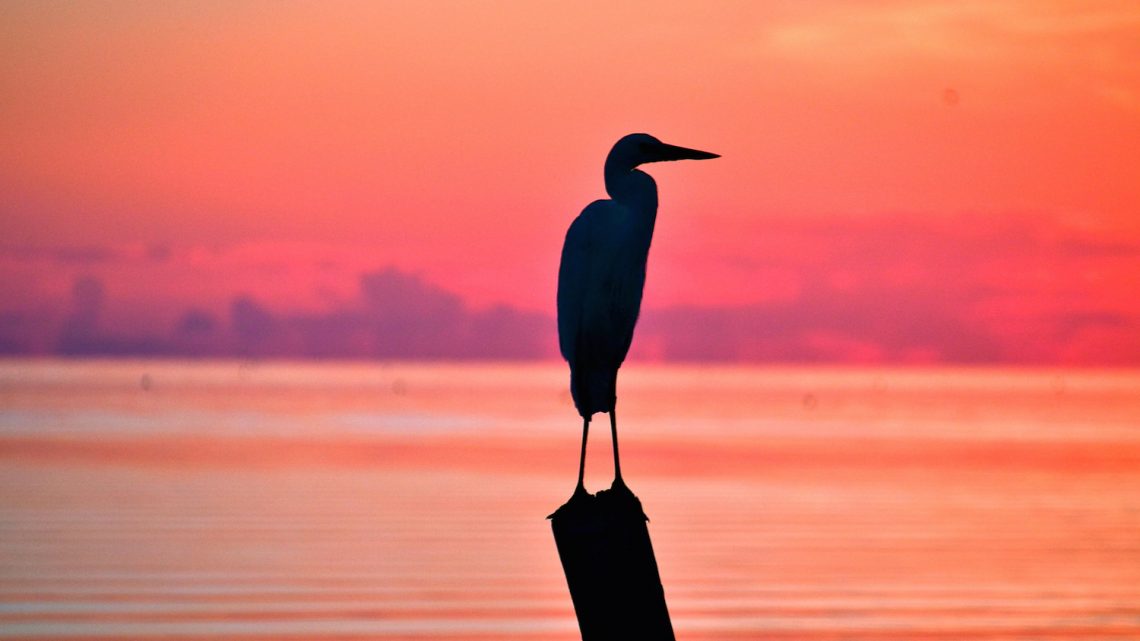Connecting people with nature: Third annual Outdoor Fest to showcase Florida Keys National Wildlife Refuges
Get an up-close take on the great outdoors with the Florida Keys National Wildlife Refuge system celebration Saturday, March 10th through Saturday, March 17th, with the third annual Outdoor Fest hosted by US Fish and Wildlife Service’s Florida Keys National Wildlife Refuges Complex and their Friends group Florida Keys Wildlife Society, featuring a week of family-friendly, mostly free outdoor adventures and hands-on activities.
“The National Wildlife Refuge System is part of America’s network of amazing public lands,” says Ranger and Outreach Coordinator Kristie Killam. “We’re really fortunate to have these areas for people to visit and enjoy nature.”
Killam, her colleagues, and The Society created the Outdoor Fest to help promote an understanding and appreciation of the refuges—home to some of the world’s most endangered habitats, plants, and wildlife species— and to encourage people to get outside and enjoy these national treasures. The week-long outdoor extravaganza spans the four refuges and features expert-guided birding, nature walks, kayaking; evening wildlife programs; nature sketching, nature photography workshops and a photo contest; two family-fun wildlife fairs; a sneak-peek opening of the National Key Deer Refuge Nature Center and the 4th Annual Run with Deer 5K in Big Pine Key.
Mark your calendar to get wild with this year’s Outdoor Fest, then take an armchair stroll through National Key Deer, Crocodile Lake, Great White Heron, and Key West National Wildlife Refuges for an overview of the nature waiting for you to connect with.
Crocodile Lake National Wildlife Refuge — You’ll find this 36-year-old refuge on mile marker 106.3 on Card Sound Road off US Highway 1. Formerly destined to be a major housing complex, the refuge is a mixture of hardwood hammock and coastal mangrove habitat. Canals dug for boat access to open waters during the failed development project produced large berms along canal banks, providing habitat and nesting sites favored by the American Crocodile. The refuge is also home to a habitat restoration program for the endangered Key Largo wood rat, with volunteers building and placing homes for them in the upland forests. While the Butterfly Garden and kiosk area adjacent to this refuge are free and open to the public, aside from volunteers, the refuge itself is currently closed to the public due to the number of extremely endangered species that inhabit this very small sanctuary and their sensitivity to human impact.
The National Key Deer Refuge — In 1957, a dwindling herd of about 27 pint-sized Key deer centered on Big Pine Key inspired the establishment of National Key Deer Refuge, an area of land that includes pine rockland forests, tropical hardwood hammocks, freshwater wetlands, salt marsh wetlands, and mangrove forests. Now in its 61styear, it protects and preserves the wildlife resources found there and is home to 23 endangered and threatened plant and animal species, including the Key deer, Lower Keys marsh rabbit, Bartram’s hairstreak butterfly and hundreds of other plant and wildlife species including the American alligator, striped mud turtles, and migratory and resident birds. Blue Hole quarry and the Nature Trails are visitor favorites.
Great White Heron NWR – For those who love being out on the ocean, this boat-only accessible refuge consists of almost 200,000 acres of Lower Keys bay side open water and islands known locally as the “backcountry.” Established in 1938 as a haven for great white herons, migratory birds and other wildlife, it provides critical nesting, feeding, and resting areas for hundreds of species of birds and sea turtles. The sand flats, patch reefs, mangrove and hardwood hammock-covered out-islands found in this refuge also contribute to supporting the biodiversity and ecology that lend to its sense of timeless beauty.
Key West NWR – In the early 1900s, feathered fashion was all the rage and plumes from our native wading birds were highly valued. The result was a slaughter that threatened these birds with extinction until President Theodore Roosevelt stepped in to establish the Key West National Wildlife Refuge, creating a safe haven for them and the now 250-plus species of birds found there. The boat-only accessible refuge covers 200,000 acres of water and 2,000 acres of land (made up of small saltwater mangrove and hardwood hammock islands) and provides habitat and nesting grounds for green sea turtle, the loggerhead sea turtle and the hawksbill sea turtle, as well as the last stand for the endangered Miami blue butterfly.
Learn more about the refuges and the wildlife-friendly ways we can explore them— visit floridakeyswildlifesociety.org and register for one of the many Outdoor Fest events. For more information contact Refuge Ranger Kristie Killam at 305.304.9625, or email Nancy or Jan at [email protected]. Brought to you in part by the Monroe County Tourist Development Council.
[livemarket market_name="KONK Life LiveMarket" limit=3 category=“” show_signup=0 show_more=0]



No Comment